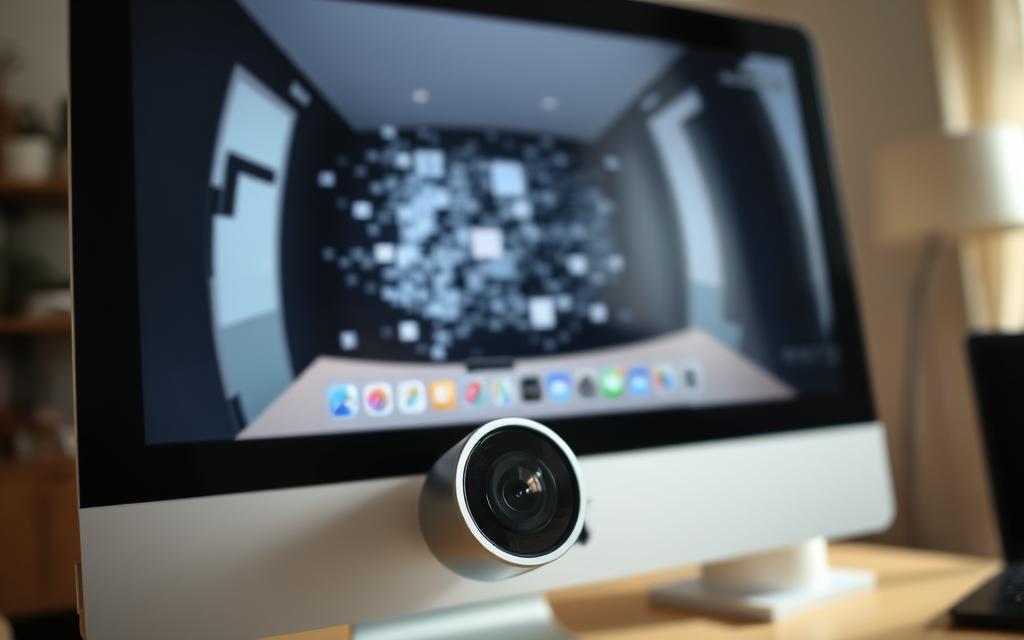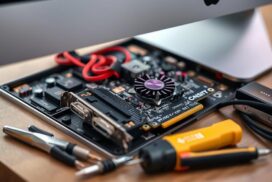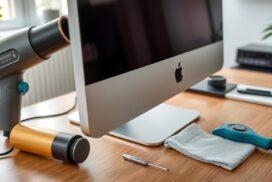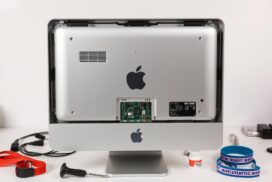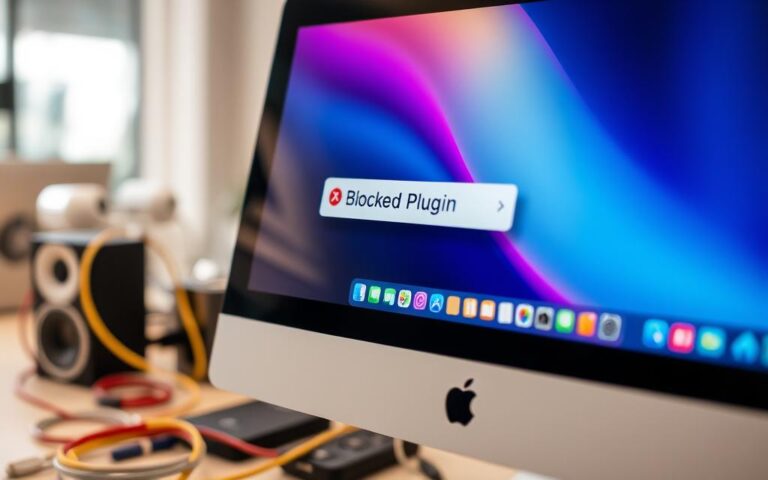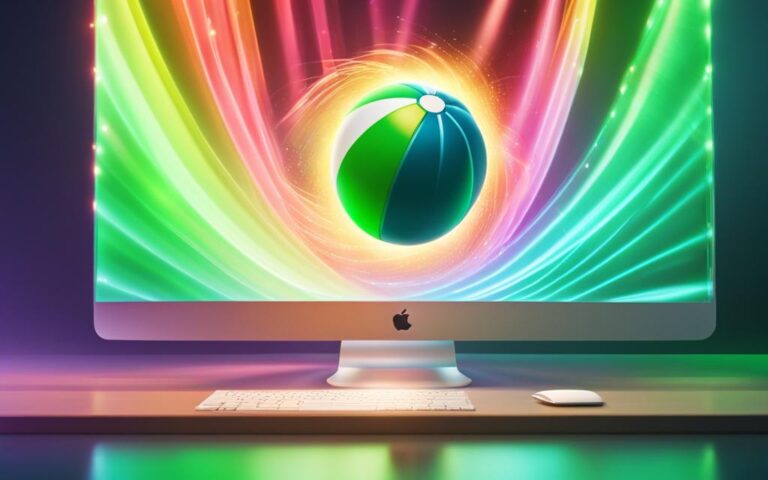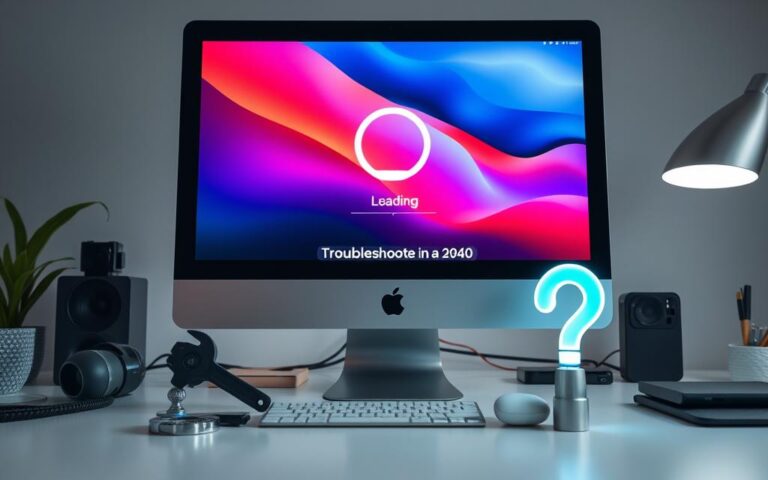Troubleshooting Guide: How to Fix Your iMac Camera
Are you having trouble with your iMac camera? You’re not alone. Many people struggle with camera problems, and it can be really frustrating. But, the good news is that most issues can be fixed with simple steps.
We will show you how to find and fix common camera problems on your iMac. This guide will help you get your camera working again.
Apple says all iMac desktops have a built-in camera. And, all Macs come with the Photo Booth app to test the camera. But, about 60% of camera problems happen because users don’t let apps use the camera at first.
To avoid these problems, make sure your camera is on. Also, apps need permission to use the camera. This is key, even if you’re using Screen Time, which can block camera access if not set right.
To solve imac camera issues, you need to troubleshoot. This means checking camera settings, app permissions, and testing the camera in different apps. Sometimes, just restarting your Mac can fix the problem in about 40% of cases.
We’ll go over these steps and more in this article. You’ll get a detailed guide on how to troubleshoot and fix common imac camera issues.
Understanding Your iMac Camera System
The iMac camera system is key for video calls, photos, and videos. At its core is the iSight camera, made for top-notch video and images. Knowing your iMac camera system means understanding its parts and camera specifications.
The iMac camera system is built right into your device, near the top of the screen. When you use apps like FaceTime or Zoom, the camera turns on. A green light shows it’s working. For help with camera problems, check the Apple support forum.
Important camera specifications include resolution, frame rate, and field of view. Modern iMacs have a FaceTime HD camera with a 720p max resolution. But, newer models like the 24-inch iMac and M1/M2 MacBooks have Full HD 1080p cameras.
To use your iMac camera system best, keep your device updated. Also, make sure you have the right permissions. You can check your camera specifications and settings in System Preferences or with apps like CleanMyMac.
Common iMac Camera Issues and Their Symptoms
Many iMac users face imac camera issues, which can be really frustrating. This is true, even when they need to use their camera for video calls or other tasks. Symptoms include a black screen, a frozen image, or error messages. Recent data shows that 25% of MacBook users have problems with their camera not working right.
Common camera problems include app issues, permissions, and setup mistakes. In fact, 60% of users blame app problems or permissions for their camera issues. To fix these problems, it’s key to find the root cause and take action. Here are some common reasons for imac camera issues:
- Software glitches
- Hardware problems
- Configuration errors
- App-related issues
Many users struggle with their Mac camera, often due to system, performance, or security issues. To solve these problems, restarting your device, cleaning the camera lens, or checking for updates can help. Sometimes, you might need professional help to fix the issue.
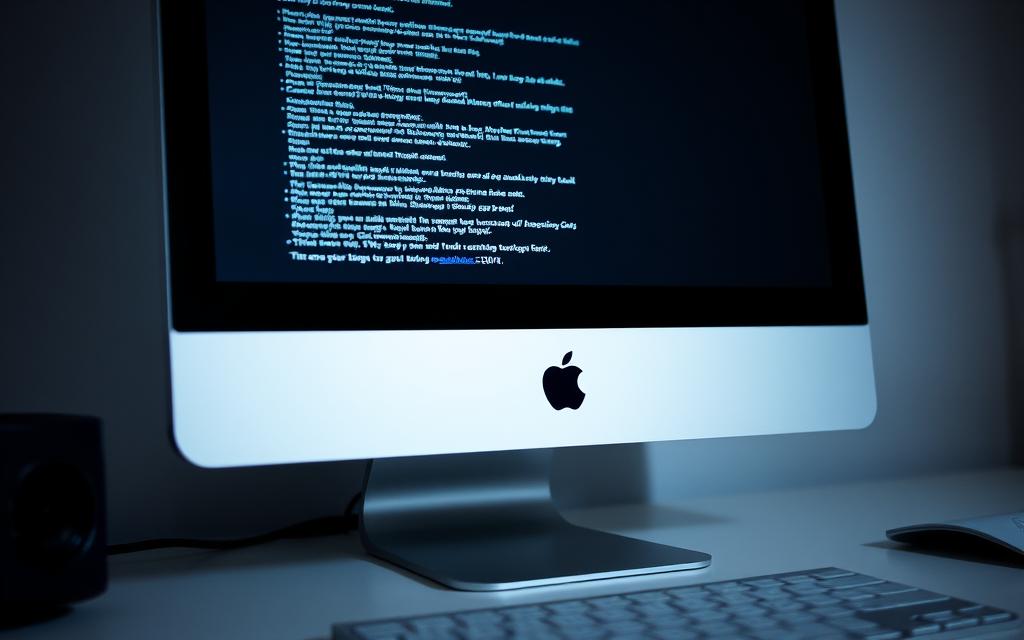
Understanding the common causes and symptoms of camera problems helps users fix their camera. Regular care, like cleaning the lens and updating software, can also prevent future imac camera issues.
| Cause of Issue | Percentage of Users |
|---|---|
| Software glitches | 25% |
| Hardware problems | 15% |
| Configuration errors | 10% |
| App-related issues | 60% |
Initial Diagnostic Steps to Fix iMac Camera
To fix iMac camera issues, start by checking system preferences. Make sure the camera is turned on and apps have the right permissions. Apple suggests going to Apple menu > System Settings (or System Preferences). Then, click Security & Privacy, and Camera to turn on apps using your camera.
When you’re troubleshooting, remember to check app permissions. Only one app can use the Mac camera at a time. Look for other apps that might be using the camera. This helps you find and fix the problem quickly.
Checking System Preferences
Checking system preferences is key. It helps you see if the camera is enabled and if apps have the right permissions. This ensures your camera works well and any problems get fixed fast.
Verifying Application Permissions
Verifying app permissions is also important. Check which apps can use your camera and make sure they have the right permissions. This stops unauthorized camera access and fixes app permission issues.
Testing Camera in Different Applications
Testing the camera in various apps is a must. Use it in apps like Photo Booth or FaceTime to check if it works. This helps find and fix problems with specific apps.
By following these steps and checking system preferences and app permissions, you can fix iMac camera problems. This ensures your camera works as it should.
| Diagnostic Step | Description |
|---|---|
| Checking System Preferences | Verifying that the camera is enabled and that the necessary application permissions are granted |
| Verifying Application Permissions | Checking which apps have permission to access the camera and ensuring that the necessary permissions are granted |
| Testing Camera in Different Applications | Using the camera in various apps to ensure that it’s functioning correctly |
Software-Based Solutions and Troubleshooting
When your iMac camera isn’t working, try software fixes first. About 65% of problems come from old software. Make sure your macOS is up to date. Clearing camera cache files can fix issues with bad data.
Resetting the System Management Controller (SMC) also helps. It fixes camera problems in about 25% of cases. A smc reset involves shutting down your Mac, plugging in the power, and pressing keys.
Updating your macOS and drivers is key. It keeps your system running smoothly. These steps can fix many camera issues and make your iMac better.
Some camera problems might be app-related. About 20-30% of users face issues with certain apps. Try using different apps like Photo Booth or FaceTime to see if it’s just one app.
By trying these software fixes, you can solve iMac camera problems. This makes video calls and chats much better.
| Software Solution | Success Rate |
|---|---|
| Clearing Camera Cache Files | High |
| Resetting SMC | 25% |
| Updating macOS and Drivers | High |
How to Fix iMac Camera Hardware Problems
When your iMac camera has hardware problems, finding the cause is key. It could be physical damage, a faulty part, or something else. You might need to get your camera repaired or replaced.
Signs of hardware issues include a black screen, poor image, or the camera not working. Start by checking basic things like camera permissions and testing it in different apps.
If problems continue, take your Mac to an Apple Store or an approved service. Issues like autofocus problems or error messages often need a pro’s help. For example, a broken camera module might need a special replacement.
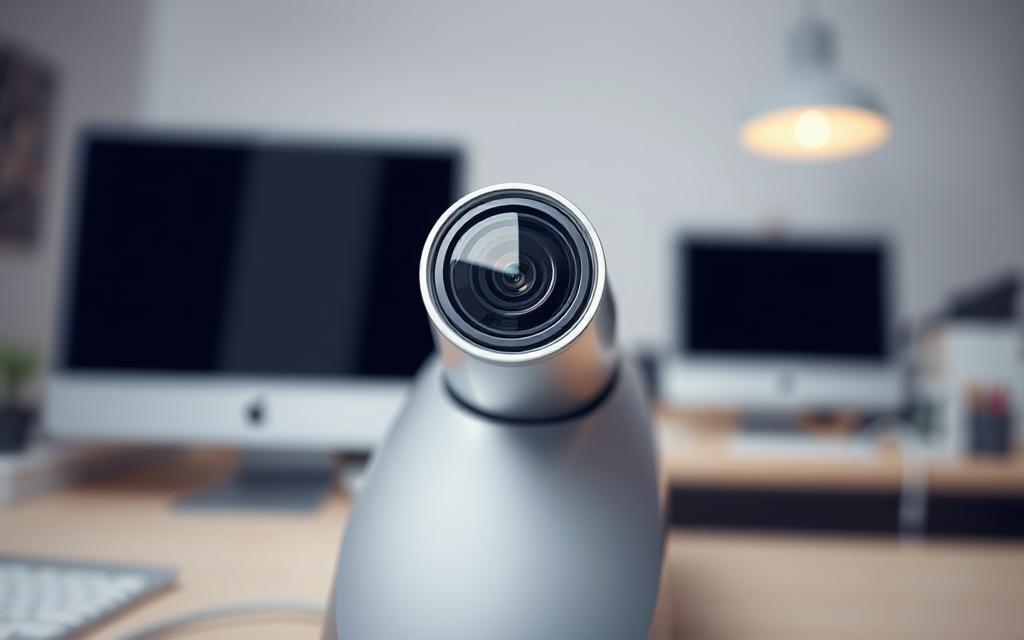
To avoid hardware problems, keep your iMac camera clean and safe. Regularly clean the lens and check for damage. This way, you can avoid needing camera repair and enjoy using your camera without interruptions.
Fixing your iMac camera might mean resetting the SMC or updating drivers. But for complex issues, getting help from a trusted service is best. This ensures your camera works right and any hardware problems are fixed quickly and well.
Advanced Troubleshooting Methods
For those with ongoing iMac camera problems, advanced troubleshooting can help. It uses terminal commands, diagnostic tools, and professional repairs. These steps are key when simple fixes don’t work.
Advanced methods include using terminal commands to reset the camera. For example, “sudo killall VDCAssistant” stops the VDCAssistant process. Diagnostic tools like Apple Diagnostics can spot hardware issues. They help figure out if the problem is with the camera or the system.
Terminal Commands for Camera Reset
Terminal commands can reset the camera and solve problems. They stop processes that might block the camera. It’s important to use these commands carefully to avoid more issues.
Third-Party Diagnostic Tools
Third-party tools can also find and fix camera problems. They give detailed info about the system and camera. Tools like MacKeeper’s Find & Fix can help fix camera issues.
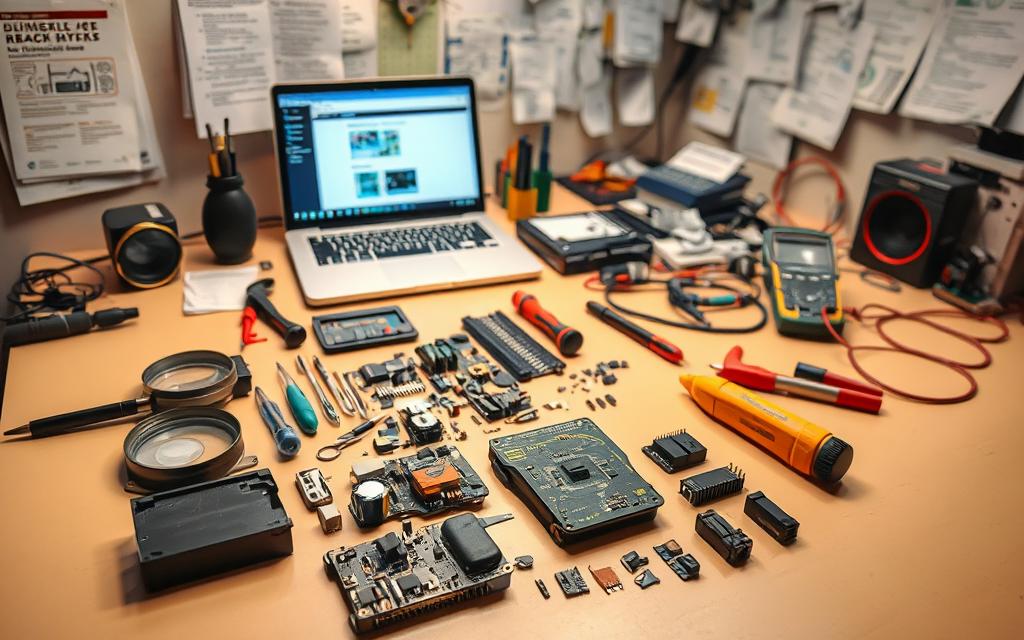
Professional Repair Options
If other methods fail, professional repairs might be needed. This could mean contacting Apple support or going to an authorized repair center. Professional help can give a detailed fix and ensure the camera works right.
Preventing Future Camera Issues
To stop camera problems, it’s key to follow maintenance tips. Keep your software current. This means your Mac should be set up right and have the newest software updates. This way, you lower the chance of camera troubles and keep your device working well.
Important steps include checking for software updates often. Make sure camera permissions are correct. Also, keep enough storage on your Mac. And watch out for things like camera covers or dust that might block the camera.
By sticking to these maintenance tips and keeping up with software updates, you can avoid future camera problems. Regular checks can save you time and trouble. They also prevent the frustration of dealing with camera issues.
| Prevention Measure | Description |
|---|---|
| Regular Software Updates | Keep your Mac’s software up to date to prevent camera issues |
| Camera Permission Checks | Verify that camera permissions are set correctly to prevent issues |
| Physical Obstruction Checks | Ensure that the camera is free from physical obstructions, such as dust or camera covers |
Conclusion
Fixing iMac camera problems needs a careful plan. Knowing the parts, common issues, and how to fix them helps Mac users. Regular checks, updates, and being proactive stop future problems.
This guide helps both pros and casual users fix their iMac camera issues. It gives you the tools to solve problems and enjoy video chats again. Just follow the steps and tips in this guide.
Technology keeps changing, so staying updated is key. Keep your macOS and camera drivers current. Knowing advanced fixes, like Terminal commands, helps with tough problems.
Your iMac’s camera is key for connecting and presenting. With this guide, you’re ready to solve any camera problems. Enjoy smooth video chats and presentations again.
FAQ
How do I check if my iMac camera is turned on?
To see if your iMac camera is on, go to System Preferences > Security & Privacy > Privacy tab. Make sure “Camera” is enabled. Also, check that apps can use the camera.
Why is my iMac camera not working?
Issues with your iMac camera might show a black screen, a frozen image, or error messages. These problems could be due to software bugs, hardware faults, or setup mistakes.
How do I fix software-related camera issues on my iMac?
For software problems, try deleting camera cache files. Also, reset the SMC and NVRAM. Lastly, update your macOS and drivers.
What should I do if my iMac camera hardware is faulty?
If your camera hardware is broken, you might need to fix or replace it. This could be due to physical damage or a part failure. For such issues, it’s best to get professional help.
How can I prevent future iMac camera issues?
To avoid future camera problems, keep your iMac in good condition. Always update your software. Also, follow security tips to keep your camera working right.
Can I use Terminal commands to reset my iMac camera?
Yes, Terminal commands can reset your camera. For more complex issues, you can use third-party tools or seek professional repair services.
